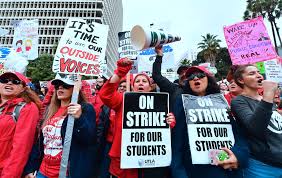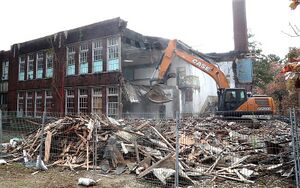Group 2
Our summary will go here
Prelude/Background
Implementation
Bill 325 SHA - The Schools into Housing Act was seen as a way to mitigate the rising homelessness crisis within Ontario, especially since the increase in the population was straining government systems. The Canadian government’s plan to implement this bill was first to survey the areas to determine which schools would be torn down to build affordable housing. The surveying of areas took the most time as it required considering certain factors, such as area density (How many people are living within a specific area), spatial space (If there was enough space to build), and impacts on the community. The plan initially proposed that some schools be torn down and converted into housing; however, from the surveyor’s data, the reports indicated that the area density was too high and tearing down some schools would not mitigate the homelessness crisis. There were too many homeless individuals in an area, and surveyors concluded that tearing down some public high schools would not decrease that number. As such, the Bill was modified to include all public high schools to be torn down as it would offer the solution to the ever-growing issue and accommodate the majority of homeless individuals.
Moreover, according to surveyors’ reports, schools took roughly 45% of spatial space in relation to the overall space within a specific community area, with 35% being high schools and 10% being elementary schools. The other percentages were residential, commercial, and industrial buildings. By tearing down high schools and building housing, 35% of the space that they occupied would increase residential building capacity to accommodate the high increase of homeless individuals. Reports also indicated that one school’s spatial space can accommodate 15% of the homeless individuals living within the community. With all the schools torn down, it can house 100% of these individuals and even have some space to accommodate others. The report on spatial space was one of the deciding factors by which the Canadian Parliament decided to push the Bill to pass and implement it first within Ontario.
After the Canadian Parliament passed Bill 325 - SHA, the next step was to notify the community and the students on how to proceed with education. Before tearing down schools, the government held various programs and outreach to inform the community on how teaching and student learning would occur in homes. Given that resources were already created for at-home learning due to the pandemic in the year 2020, the transition from in-person learning to at-home learning proved to be smoother than expected. However, some argue it could have been a smoother transition as teachers needed proper training in teaching students using this method. Protests erupted both from teacher unions and other community members against the Bill. However, despite their protests, the Bill moved forward, and both teachers and community members were forced to adjust to these changes. As a result, private school enrollment reached its capacity as these schools were exempted from the bill since the government did not publicly fund them.
Once the communities were informed of how education would proceed, schools were torn down to begin building new housing. The projected time to tear down and build these buildings is 15 years. However, Parliament urged that the tearing down and building must be prioritized and take less time if possible. As such, this urgency helped slightly with the economy as construction companies needed more individuals, thus creating jobs. Although there was an increase in the saturation of construction workers, the funding these companies received could not adjust the pay these workers should have been paid. However, because the homelessness crisis heavily strained the Canadian economy, individuals took these construction jobs because they provided some income for them. With the increased labour, the projected timeline was reduced from 15 to 7 years. As the construction began, the public high schools in downtown Toronto were torn down first. They would then start tearing down schools as the projects in downtown Toronto were completed, working their way towards the suburbs and then further schools away from the cities until they were all converted into affordable housing.
A few months before the demolition of public high schools, the Boards of Education in Ontario implemented a revised version of at-home learning based on the plans for the 2020 COVID-19 years. This revised educational method introduced what is now called “Virtual High School Learning.” As the name suggests, this schooling method allows high school students to learn from home using their electronic devices and online platforms such as CanComm and Microsoft Classroom. However, with the advancement of technology, many have indicated that virtual reality would soon be an option. The Canadian Parliament, in accordance with the Ministry of Education, has argued that virtual learning is the most effective method to teach high school students. However, critics have had their fair share of opinions regarding this method, especially concerning students’ mental health and the effects on teachers.
As Virtual High School Learning was implemented, students and teachers had difficulties adjusting to this method of learning and teaching, which were reflected in the student assessments. Reports from various school boards indicated that student grades fell by 30% compared to when they were in-person. With this decline, school boards invested more into training teachers to better teach and support their students. This investment allowed teachers to receive the support and resources they desperately needed, consequently permitting them to find innovative and creative methods for teaching. With support, teachers could adapt and adjust their teaching styles to accommodate the restrictions of virtual learning leading to an increase in students' grades. Over time, reports later indicated that students did better through virtual learning compared to in-person learning.
Despite the criticisms after the Bill was passed, virtual learning became the better teaching and learning method. Not only were teachers better supported, students also excelled in their academics because of the support their teachers received, allowing for more interactive teaching styles and methods. Furthermore, reports have indicated that homeless individuals and low-income families benefitted from virtual learning as, through this method, parents were able to be more involved with their children and their education. As parents became more involved, students felt supported and guided, resulting in better grades and the overall quality of their work. Despite seeing a 30% decrease in student grades at the beginning of this change when the Bill was passed, it has been constantly rising, with a 57% increase, which will continue according to recent reports.
Education
Impacts on Teachers
Impacts on Students
Found Journal Entries from a Student in 2048


